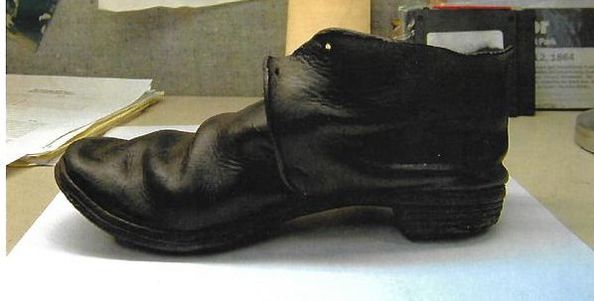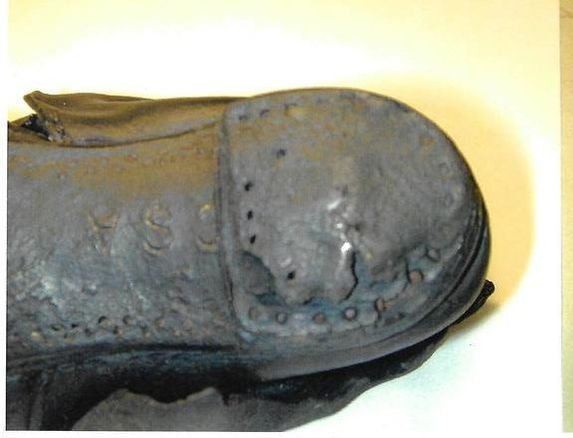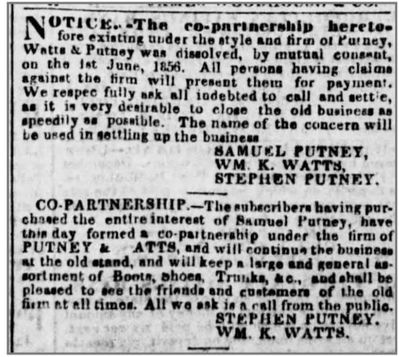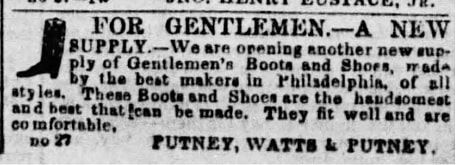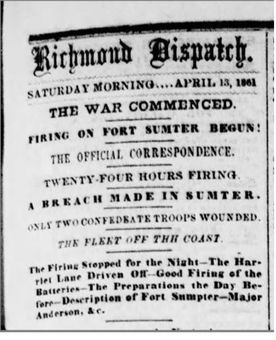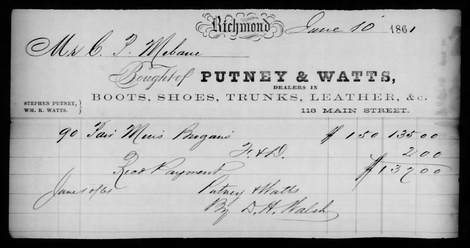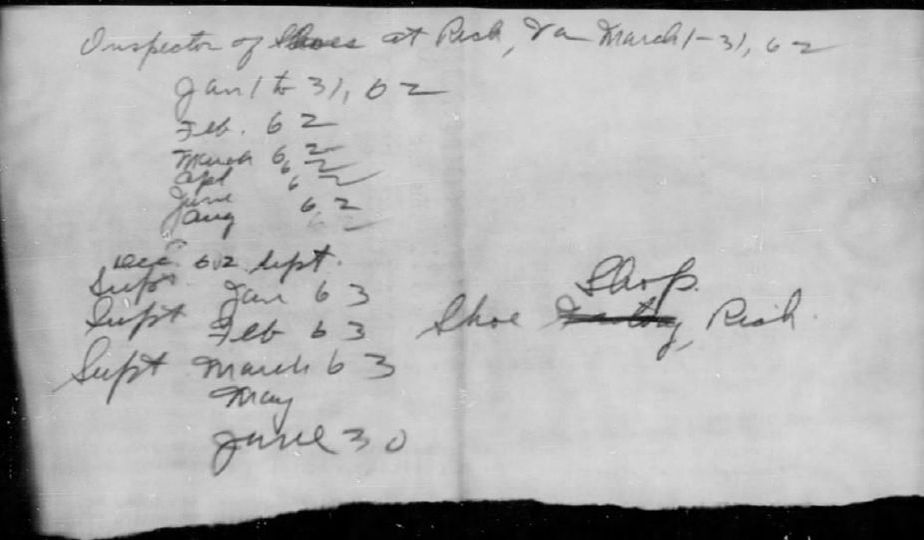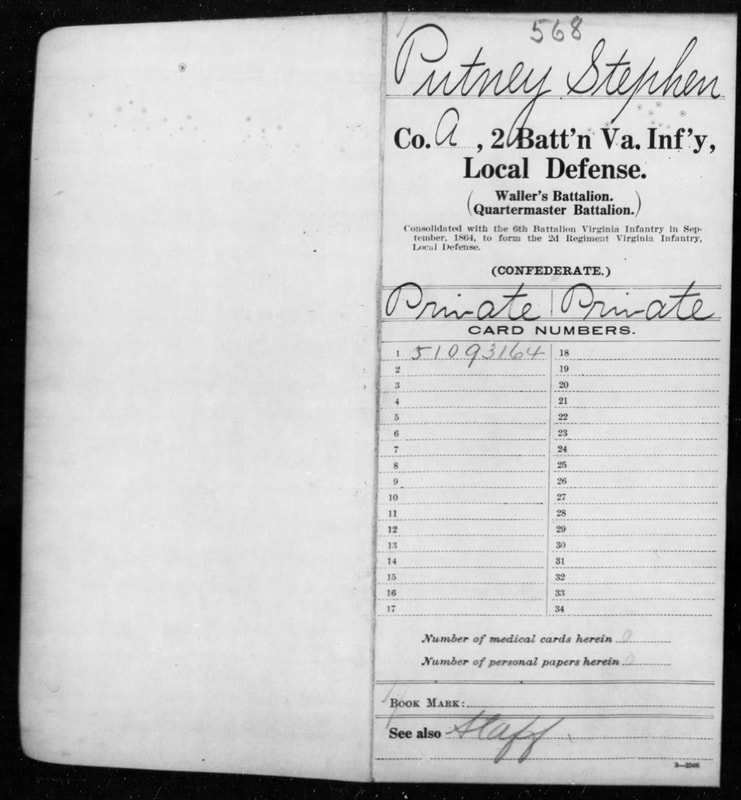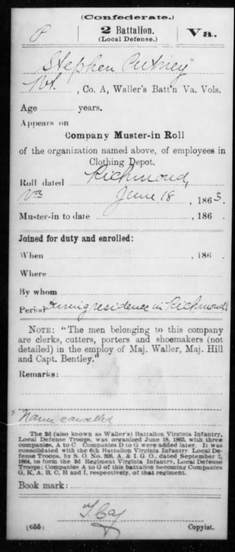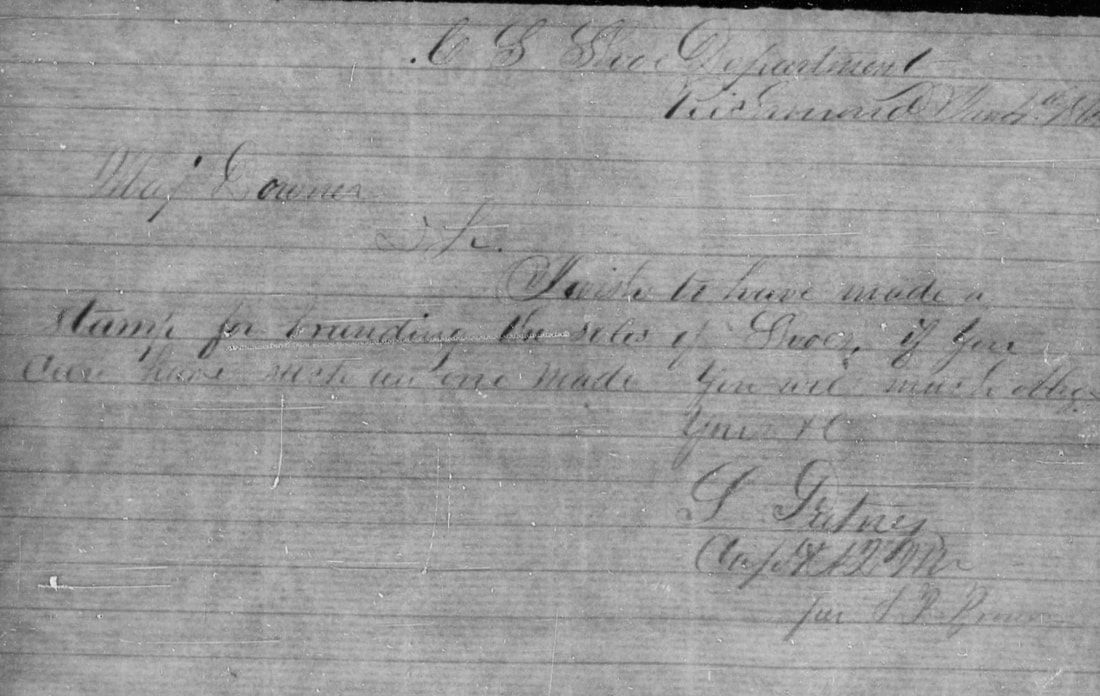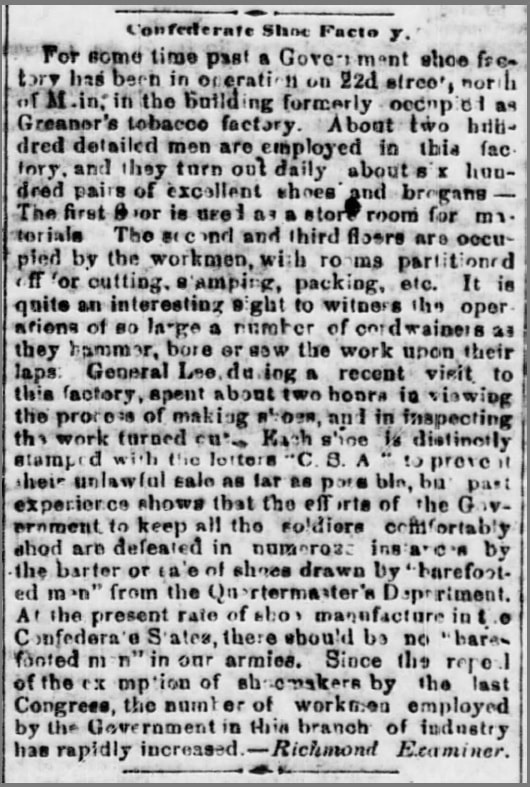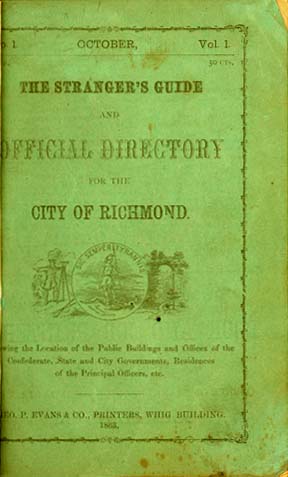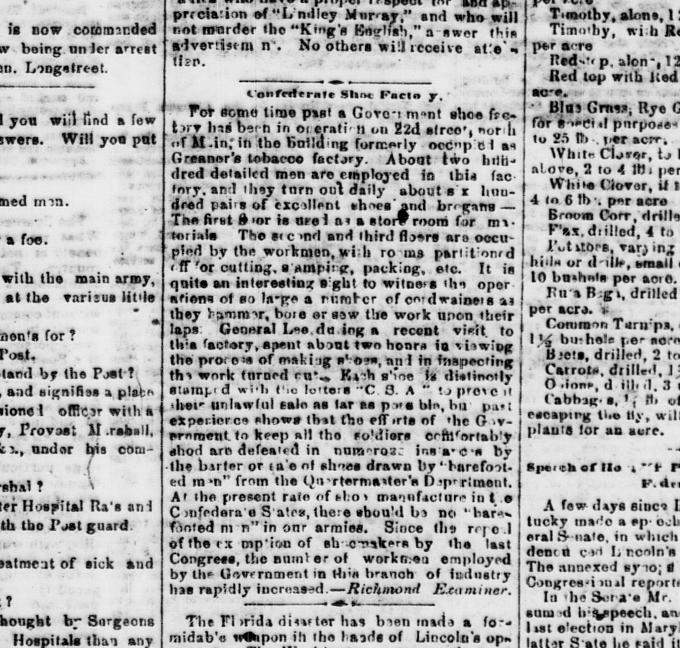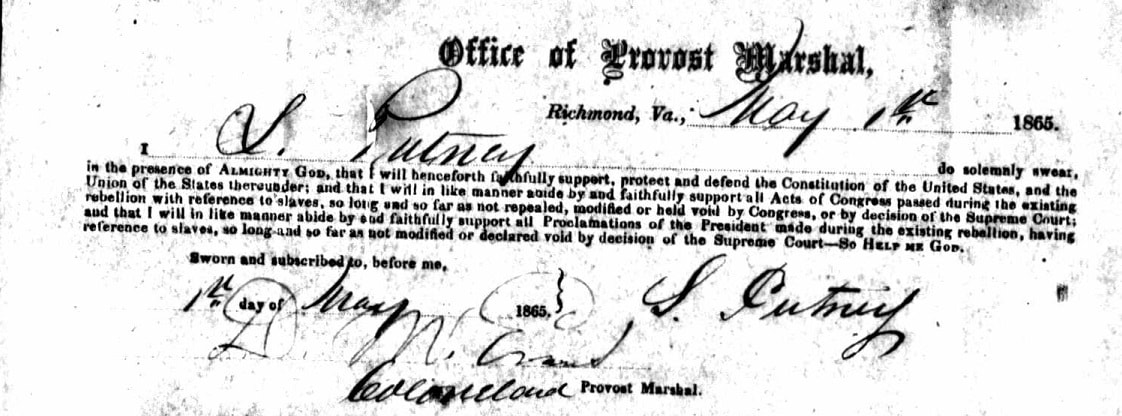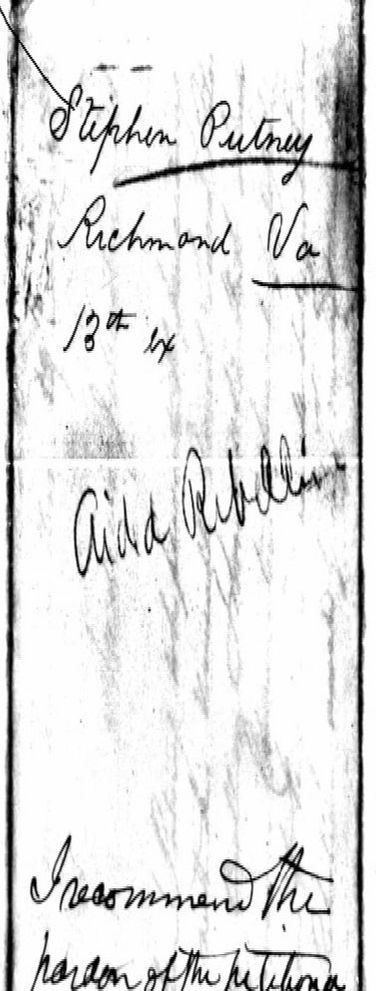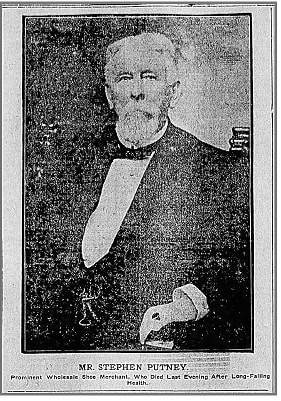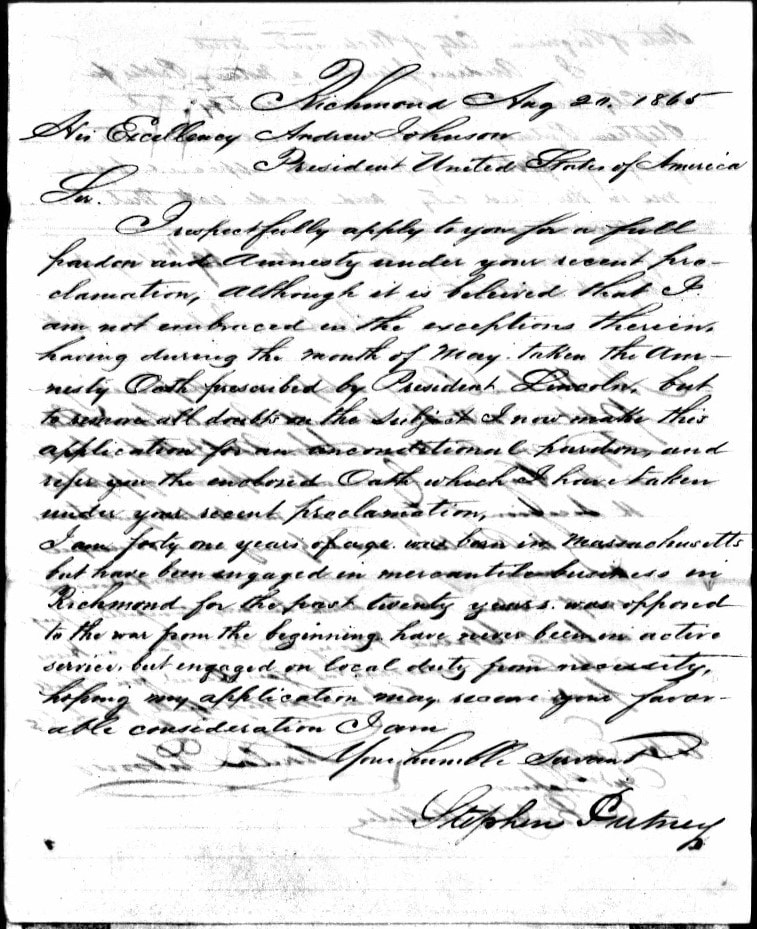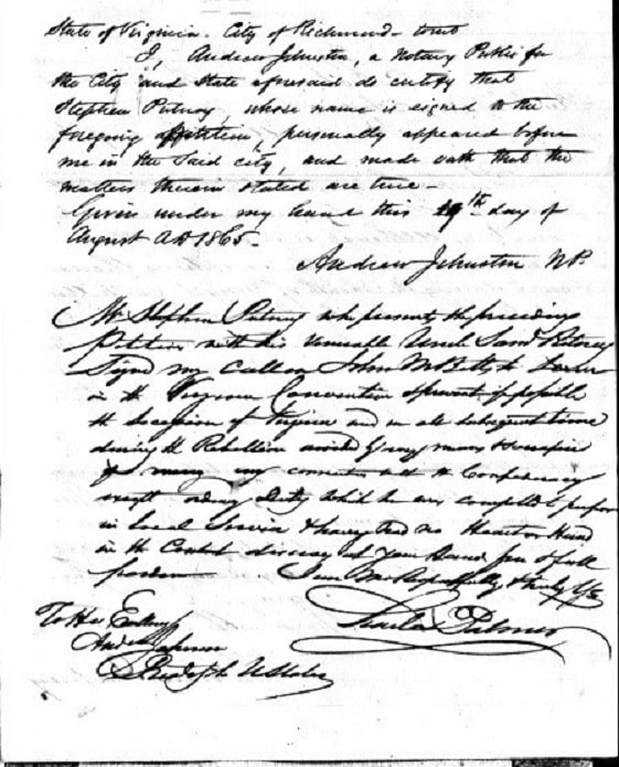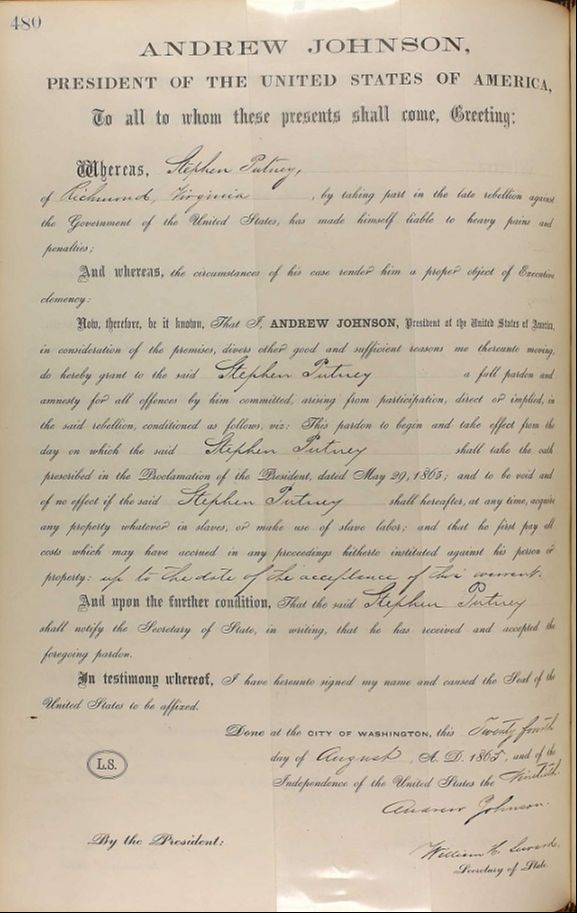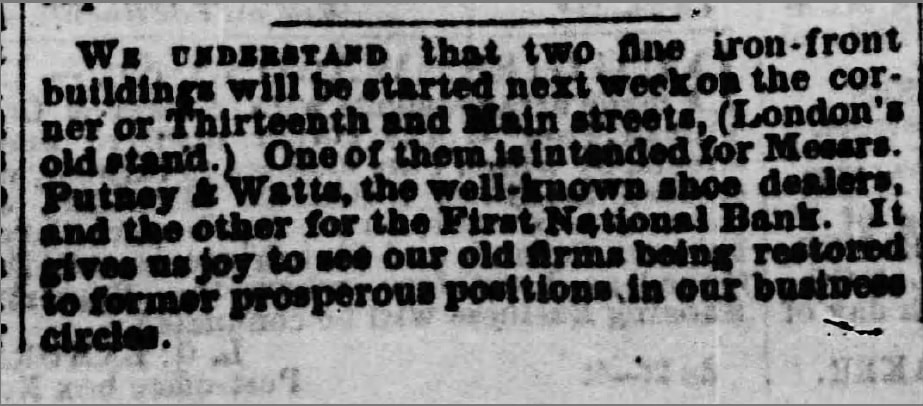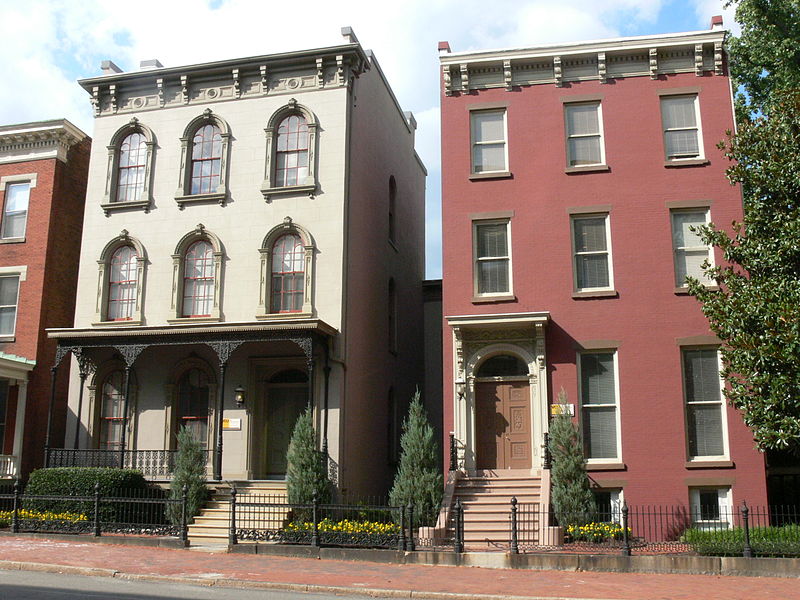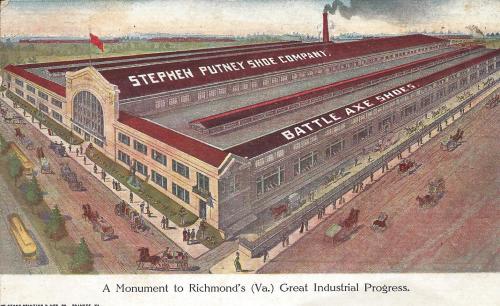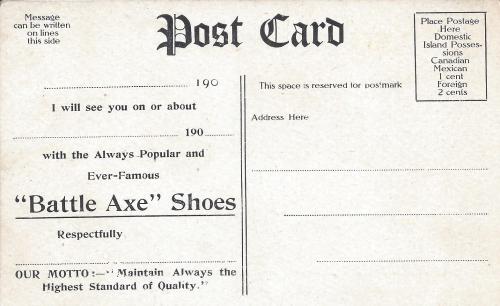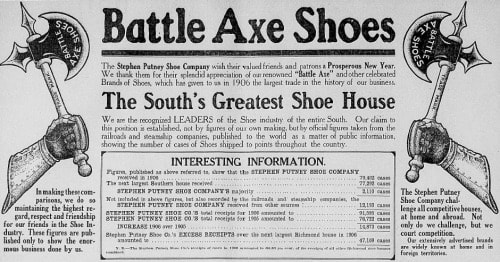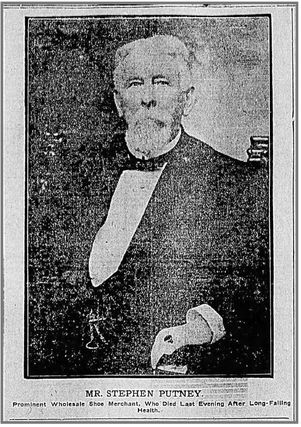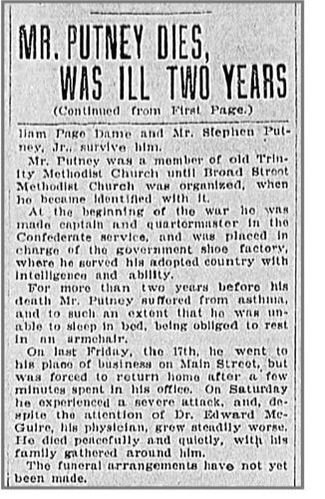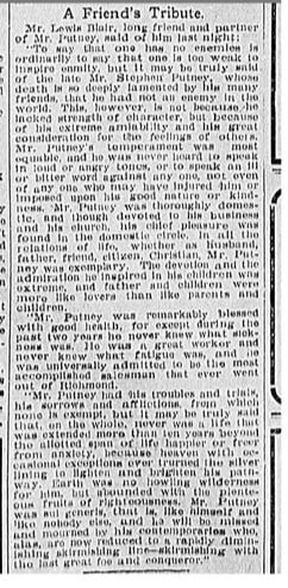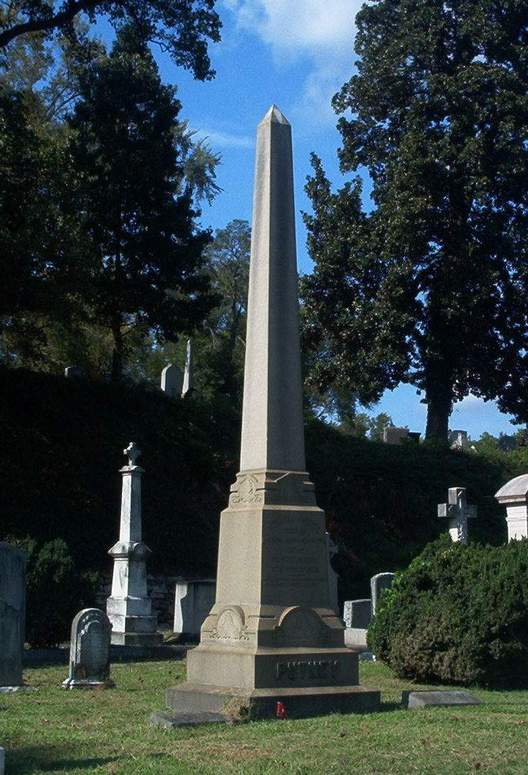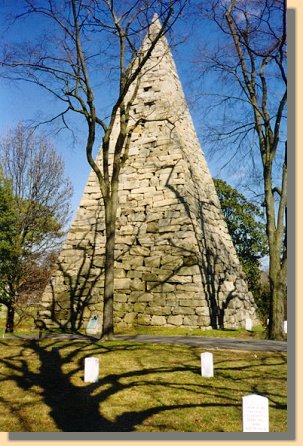Captain Putney and The Richmond Shoe Manufactory
-
The original shoe shown here was made at the Shoe Manufactory in Richmond, Virginia. Captain Stephen Putney was put charge of of in September 1861 when the Clothing Bureau in Richmond was divided into two branches one for clothing one for shoesWhen we can it has been our habit to share interesting historical accounts of the people associated with certain footwear and equipment made during the war. As research was done on this Confederate shoe we ran into interesting accounts of both Stephen Pitney and of the Confederate Footwear Manufactory under the Clothing Bureau in Richmond, Virginia.
|
Below we share with our customers some of the interesting things we came across during our research on this featured shoe. We hope you will find these as interesting as we did as our research went forth.
The Pre-War Years
Before the war Stephen Putney was a partner in two large boot and shoe partnerships in Richmond.
The War Years
Putney and Watts benefited from the outbreak of the Civil War. Richmond was the only large-scale industrial city controlled by the Confederacy during most of the Civil War. The city's warehouses were the supply and logistical center for Confederate forces. The city's Tredegar Iron Works, the 3rd largest foundry in the United States at the start of the war, produced most of the Confederate artillery, including a number of giant rail-mounted siege cannons. The company also manufactured railroad locomotives, boxcars and rails, as well as steam propulsion plants and iron plating for warships. Richmond's factories also produced guns, bullets, tents, uniforms, harnesses, leather goods, swords, bayonets, and other war materiel. A number of textile plants, flour mills, brick factories, newspapers and book publishers were also located in Richmond. While smaller than the shipyards controlled by the Union in Norfolk the Confederacy did have the shipyards in Richmond.
The city's loss to the Union army in April 1865 made a Union victory in the Civil War inevitable. With Virginia firmly under Union control, including the industrial centers of Richmond, Petersburg and Norfolk, the mostly rural and agricultural deep south lacked the industry needed to supply the Confederate war effort.
The city's loss to the Union army in April 1865 made a Union victory in the Civil War inevitable. With Virginia firmly under Union control, including the industrial centers of Richmond, Petersburg and Norfolk, the mostly rural and agricultural deep south lacked the industry needed to supply the Confederate war effort.
Inspection of Shoes at the Richmond Shoe Manufactory in Richmond, VA March 1 - 31, 1862
Stephen Putney's Combined Service Records
Then eight days later on June 25, 1863 Colonel Myers requested that Pvt. Stephen Putney be appointed a Captain and report for duty in the Clothing Bureau. (See below.)
June 25, 1863 letter from Colonel Abraham Charles Myers (first quartermaster-general of the Confederate Army) to James Alexander Seddon, Confederate States Secretary of War requesting that Stephen Putney be appointed Captain and report for duty in the Clothing Bureau. “ He has been superintending the manufacturing of shoes since the beginning of the war, and his valuable and efficient services should be rewarded by the appointment ask.”
Above-Letter dated 1864 to W. S. Downer: Superintendent Richmond Armory from Captain Stephen Putney requesting a new replacement stamp to mark the footwear with "CSA" as can be seen above on the sole of the original shoe.
Another account of Lee Visiting the factory can be found in Obituary at bottom of page.
Post War Years
On May 29, 1865, President Andrew Johnson provided for amnesty and the return of property to those who would take an oath of allegiance. However, former Confederate government officials, officers with the rank of colonel and above from the Confederate army or lieutenant and above from the Confederate navy, and people owning more than $20,000 worth of property had to apply for individual pardons. Thousands did ask for and receive amnesty. Among them was Stephen Putney who on May 1, 1865 signed his Oath Of Allegiance. On August 2, 1865 he sought amnesty from President Johnson.
Stephen Putney's Oath Of Allegiance, amnesty documents and obituary are copied below.
Stephen Putney's Oath Of Allegiance, amnesty documents and obituary are copied below.
Stephen Putney Oath Of Allegiance dated May 1, 1865
Stephen Putney's August 2, 1865 Letter To President Andrew Johnson Requesting Amnesty
August 1865 letter granting Stephen Putney amnesty signed by President Andrew Johnson
Copy of Stephen Putney's offical amnesty document recorded and signed
by President Andrew Johnson on August 24, 1865
Stephen Putney Shoe Company
|
Stephen Putney's Shoe Company the longest operating shoe company in the US at 169 Years
The company prospered, and after 1880 established a large industrial plant at 9th and Perry Streets in neaby Manchester.
William Watts died in 1888 and the company became the Stephen Putney's Shoe Company. Needing more space the company moved to their final location on West Broad Street in Richmond in 1903 shortly before Stephen Putney’s death. Here they produced the famous Battle Axe Shoes. Before they finally shut down in 1986. It closed as the longest operating shoe company in the United States with 169 years in business to it's credit. |
Obituary of Stephen Putney
|
Stephen Putney was buried in the Hollywood Cemetery in Richmond, Virginia.
The cemetery is the resting place of two United States Presidents, James Monroe and John Tyler, Confederate States President- Jefferson Davis, 25 Confederate Generals, including George Pickett and J.E.B. Stuart. In 1869 a 90-foot high granite pyramid was built as a memorial to the more than 18,000 enlisted men of the Confederate Army buried in the cemetery, often characterized as the Confederate National Cemetery |
|
Not far from Putney's grave site is the first memorial erected to Confederate soldiers in Richmond, Virginia.The 90 foot granite pyramid was completed in 1869. at a cost of over twenty-five thousand dollars.
It was constructed without mortar, making the construction very dangerous. The crane was not tall enough to put the capstone into place so volunteers were requested to climb the pyramid and manually guide the capstone into place. Not surprisingly, no one responded. Eventually, a sailor, who was serving time in the state penitentiary (located near to the cemetery), volunteered. Legend holds that for accomplishing the feat officials granted the sailor his freedom. The penitentiary records only say "transferred" with no place of transferred listed. |
